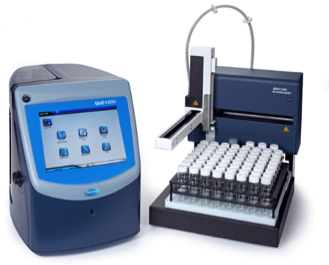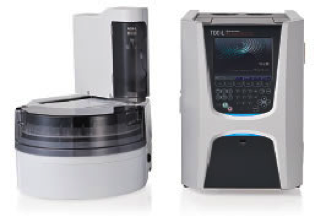November 16, 2018 -- Carbon is found in both organic and inorganic forms. Organic carbon typically comes from naturally occurring urea, amines, and humid acid or from synthetic sources such as pesticides, fertilizers, and detergents. It also occurs as a result of the metabolic processes of bacteria and microorganisms. Inorganic carbon can come from a wide variety of sources, such as carbonate, bicarbonate, and carbon dioxide. Measurements of organic carbon are important for assessing water quality for a variety of purposes, however total organic carbon (TOC) analyzers generally determine the total carbon content of a sample and then separately account for the organic and inorganic content of the sample. Since the inorganic and organic content must sum to the total content, any two measurements determine the third. For this reason, the instruments classified in this post are referred to generally as sum parameter instruments.

Total organic carbon (TOC) is the most prominent of these techniques and is most often used to measure biological content or contamination of water samples, both from water treatment facilities, pharmaceutical facilities, and drinking water. Through either direct or subtractive measurement involving total carbon, TOC quantifies the amount of organic material in liquid or solid samples. For TOC, several methods are used to determine total organic carbon content, the most common of which are combustion and persulfate oxidation. Generally speaking, combustion methods are used where particulate content or carbon content is expected to be high, as in wastewater.
TOC analyzers are used in biotechnology and pharmaceutical operations to check the purified water as well as to ensure there is no cross-contamination between drugs. Furthermore, it has been found that low TOC in the pipelines controls the growth of endotoxins and microbes and thus biofilms within the manufacturing process.

Other sum parameter measurements include total nitrogen or total bound nitrogen (TN, TbN), total adsorbable or extractable organic halogens (TOX, AOX, EOX), total sulfur (TS), and many others. For the purposes of this post we have divided the market into TOC and TOC/TN instruments and other sum parameter instruments, with the major components of that second category being nitrogen-only instruments, followed by the various halogen analyzers.
What do you think?
Do you use TOC techniques in your lab? What instruments under this umbrella aid in your research? Join the discussion in the Forums!
Copyright © 2018 scienceboard.net


